
|
 |

|
 |
|
A transformative journey through the Nine Emotions - Shereen Saif e-mail: shereen.saif@gmail.com Photos: Manoj Parameswaran July 26, 2017 The fundamental objective of a dramatic performance in the Indian theatre tradition is to evoke Rasa in the spectator. For without Rasa, no meaning can be effective and efficacious. Yet, the concept of Rasa and in particular Navarasa-s (the nine emotions) is frequently miscomprehended. This may have something to do with the fact that Bharata, the brilliant theatrologist, musicologist and rhetorician who is attributed with the authorship of Natyashastra (The Compendium of Dramatic Arts) sometime in 200 B.C, spoke of Rasa in terms that may appear oblique to the 21st century mind. To appreciate the Natyashastra and through that the concept of Navarasa-s as understood by artists of yore, one may have to mentally time travel to about 2,000 years ago to an ancient India where theatre was a highly developed and the most dominant genre. Back then, theatre was considered the most complete form because it was a distillation of all possible knowledge, arts and crafts. In Bharata's words, "There is no wise maxim, no learning, no art or craft, no device, no action that is not found/reflected in the drama." Given the exalted status of theatre, what Bharata's monumental work primarily set out to do was describe and analyze the existing performing arts traditions that flourished during his times and offer rules and principles for practitioners - a comprehensive source book for drama and allied art forms (dance and music). Bharata also took some creative liberty by ascribing the Natyashastra with a mystical and divine origin. Legend has it that Brahma, the Creator, himself took the essence of the four Vedas and created for all of mankind a fifth Veda - The Natyaveda, that could be seen and heard, containing good counsel for the fulfillment of the four-fold aspects of human-pursuit: Dharma (duty), Artha (wealth), Kama (desire) and Moksha (liberation). In the passage of time, classical theatre tradition across India started to wane as other arts took precedence. Yet, the Natyashastra survived and continued to remain the seminal source of reference for Indian performing arts even to this day. Given that the Natyashastra was written primarily with theatre in mind, it helps to relook at the concept of the Navarasa-s keeping that perspective. Renowned Kutiyattam exponent, scholar and founder of Natana Kairali, Venu G. elaborates: "The Natyashastra is the greatest work on theatre and stagecraft in the world. This was written when theatre development was at its peak in India. In 6,000 verses what Bharata essentially talks about is how an actor should prepare for stage, fully supported by a practical, living tradition of theatre. With the decline of theatre, quite naturally the application of Navarasa-s got watered down from its full potency to such an extent that today, in some representations it is reduced to the enactment of emotions with mere contortions of the face." Centuries after Bharata, the Kodungallur Palace in Kerala, renowned since the 18th century for its patronage of all branches of knowledge, took up a scientific and systematic research on the Natyashastra. Perhaps helped by the fact that Kuttu and Kutiyattam, the most ancient forms of Indian theatre were still extant in a form not very different from how it was practiced during Bharata's times. At the Palace's Abhinaya Kalari (Acting Laboratory), Vidwan Elaya Thampuran (1800-1850) started conducting singular studies and experiments specifically in the area of Navarasa-s because it was considered the best possible tool to hone an actor's histrionic abilities. The research was continued for two generations by his successors Cheriya Kochunni Thamupuran and Bhagavathar Kunjunni Thampuran. The observations from their research was used to develop a methodology to teach Navarasa abhinaya to a handful of Kutiyattam and Kathakali actors who had completed traditional education in their respective performing art forms. The admission to this highly elite kalari was based on merit of the highest order and in the history of this kalari, only 8-10 actors were ever trained. The greatest Kutiyattam legend Guru Ammanur Madhava Chakyar was one among them. However, neither he nor his counterparts ever taught Navarasa abhinaya in its complete form to their disciples. And slowly this knowledge was lost in the annals of time. Given this loss of practical knowledge, it would be a formidable task for an actor living in this time and age to garner a full and deep understanding of the Navarasa-s and intelligently apply the performance theory of Natyashastra to enhance their craft. Reading of the Natyashastra can only offer surface level understanding. A real understanding would take a lifetime of research, observation, application and deliberations. So where could one turn to, to understand the theatre process of evoking the Navarasa-s? Navarasa-s in contemporary theatre practice 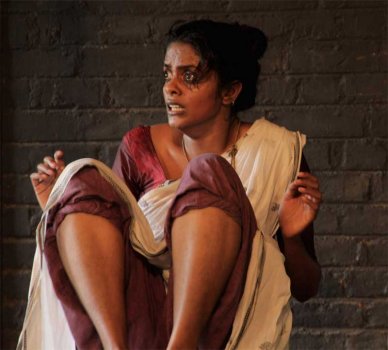
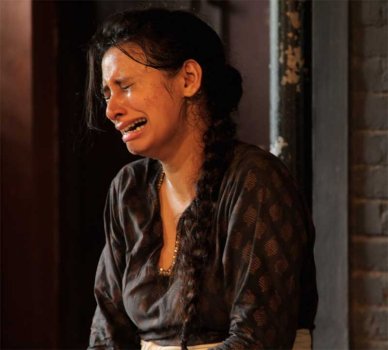
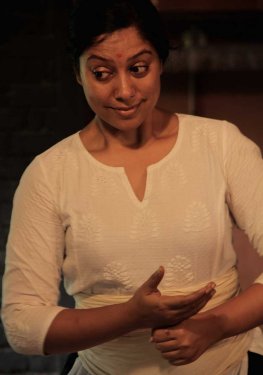
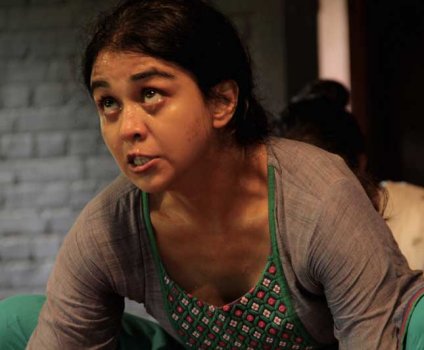
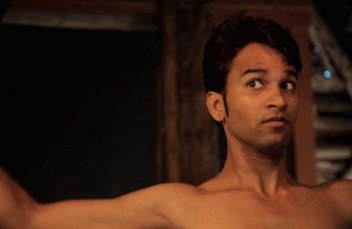
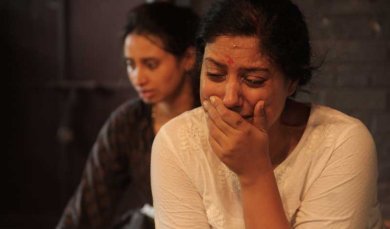
There appears to be only two schools/ methods in the world today that scientifically employ the practice of Navarasa-s as a tool for emotional training for performers. The first is Rasaboxes training, a physical theatre system developed by the American theorist/ director Richard Schechner in the late 1990s. This system draws from Schecher's analysis of the Natyashastra performance theory, contemporary emotion research and neuroscience. In terms of the training methodology it is observed as a series of exercises that combine breath, sound and movement in an orderly progression, helping actors safely and effectively explore a wide range of emotions. The second, closer to home, is Venu G's Navarasa Sadhana, a training method deeply rooted in the Indian theatre tradition. Being the direct and closest disciple of Guru Ammanur Madhava Chakyar, gave Venu access to snippets of the extremely classified information of the Navarasa training that Guruji underwent during his time at the Abhinaya Kalari at the Kodungallur Palace. Amalgamating this knowledge with his training in Kutiyattam and years of extensive research on the Natyashastra, Venu G developed the Navasara Sadhana about a decade ago as a tool to strengthen the actor's capability of delivering an aesthetic experience. "Navarasa is the core of an actor's training. Bharata says that Rasa, the aesthetic experience relished by the audience as a result of the actor's performance is produced by a skillful combination of Vibhava (determinants), Anubhava (consequents) and Vyabhicharibhavas (transitory states). While Bharata mentions the ingredients, he did not elaborate on the exact recipe of creating Rasa. That he left to the actor to research, analyze and develop on his own. My personal research in this connection convinced me that to bring out Navarasa-s one has to work with a combination of eye, breath, voice, using one's imagination and seeing with the mind's eye. In addition, the Vyabhicharibhavas, all 33 of them have to be fully explored through improvisational exercises where the actor lives the experience through complete involvement of the sensory and physical realms." Speaking with the eyes Netrabhinaya - using the eyes to speak and tell stories, is the cornerstone of Navarasa Sadhana. According to Venu G, the eyes must be alive, precise, creative, searching and proactive. They must be seeing and not just looking. Echoes of this idea can be heard in modern theatre from practitioners like Declan Donnellan who said, "Acting is a question of what we see. For the actor, we are what we see." Stanislavski, the most influential theatre personality of the 20th century and beyond also talked about how the eyes were portals to the inner world of an actor, "It is important that an actor's eyes, his gaze, his glance, reflect the size, the depth of his creative mind."
The triad: Emotion-Breath-Voice Breath is intrinsically connected to emotion. The practice of Rasavayu in traditional Indian theatre is based on this founding principle that every rasa has an associated breath. Navarasa Sadhana combines the practice of breath and voice to access the core of every emotion. Venu G. explains, "For each of the bhavas, the right voice has to be identified by the actor. This is achieved through a long process of producing a variety of sounds without any prejudice until the right one is attained. This also enables the actor to identify the corresponding breath (vayu). For breath is the source of voice. Once this state is reached, evocation of the rasa becomes easier." Mind's Eye Navarasa Sadhana stresses on the importance of using the actor's imagination to give depth to the abhinaya. For a representation to seem believable and vivid to the audience, the actor has to first paint in his mind's eye a clear picture of the character he is playing, the circumstance and the environment and believe in it without a grain of doubt. For the actor's mental picture to transform into a sensory experience, he should also imagine associated sights, sounds, smells, tastes and touch. "When it is real to the actor, it will seem real to the audience. There will be truth in the actor's emotions and the way it is expressed which in turn will create rasa in the viewer," adds Venu G. Half man-half woman The image and concept of Ardhanarishwara as applied in the Indian traditional theatre paradigm is that of an actor who is half man and half woman: "In Navarasa Sadhana, the actor is considered neutral and genderless with both male and female energies residing in harmony, in equal measure. A systematically trained actor should be able to easily invoke either energies (male or female) as required for a character.This opens a lot of creative possibilities for the actor and liberates him from his physicality." Lokadharmi approach Drawing from real life observation and personal experience to represent every day human behavior is an important aspect of the Navarasa Sadhana training. While this may sound like a Lokadharmi (realistic) approach, it can be used to enhance Natyadharmi (stylized) abhinaya. Venu G. clarifies:"There is a general understanding among Indian performing art practitioners that one should either take a Natyadharmi or a Lokadharmi stance in their abhinaya. What I have come to realize is that, to make a performance 'real' and emotionally charged, one has go through the Lokadharmi process for a deep and extreme self-exploration of sthayi bhavas. Drawing from real life experience - either personal or from the close observation of others, the actor creates a believable mental scenario pertaining to a specific bhava. No restriction whatsoever is placed on the actor in terms of how he expresses his emotions - crying, laughing, shouting, jumping... He has to respond naturally to his emotional urges and authentic physical expression to experience satvika bhava. This process creates a physical and emotional memory that once internalized, can be called upon at will by the actor. Good Natyadharmi abhinaya will always have a deep internal Lokadharmi experience." Constant practice French dramatist Antonin Artaud is often quoted to have said, "The actor is an athlete of emotions." This suggests that actors must develop emotional endurance, flexibility, and dexterity through the daily practice of being in emotion, just as athletes train for the track. This is the exact premise of Venu G's Navarasa Sadhana. He adds, "Navarasa-s, the nine human expressions much like the Sapta Swara-s of Indian music, touches the senses deeply. Navarasa Sadhana as a daily practice is fundamental to an actor's development just as swara sadhakam is for the musician."
Catharsis Navarasa Sadhana also serves as a cathartic tool for the actor to purge himself emotionally. Journeying through the nine emotions, the actor takes an emotional roller-coaster ride of highs and lows and at the end feels purified and in a neutral state from which he is able to create again. While the Navarasa Sadhana appears to be a holistic approach, perhaps its most appealing aspect is that it cuts through the intellectual fog of theory and offers a very practical, visceral process for the actor to emotionally open up to sthayi bhavas. Venu G's teaching methodology is powerful because it is non-judgmental, non-prescriptive and very much actor led. Armed with certain guidelines and tools, the actor is encouraged to undertake a journey to his core to make an emotional connect and express authentically. Transformation in the actor happens through a continuous process of doing and reflecting. "Navarasa Sadhana is an actor's personal practice to find truth, depth and honest expression. Once an actor takes care of that, Rasa will take care of itself," concluded Venu G. Shereen Saif is a dancer, actor, storyteller, creative movement advocate and PR consultant based in Dubai. She is a Mohiniattam disciple of Dr. Neena Prasad and pursues her training in Indian theatre techniques under veteran Kutiyattam exponent and research scholar Venu G. Post your comments Please provide your name and email id when you use the Anonymous profile in the blog to post a comment. All appropriate comments posted with name & email id in the blog will also be featured in the site. |